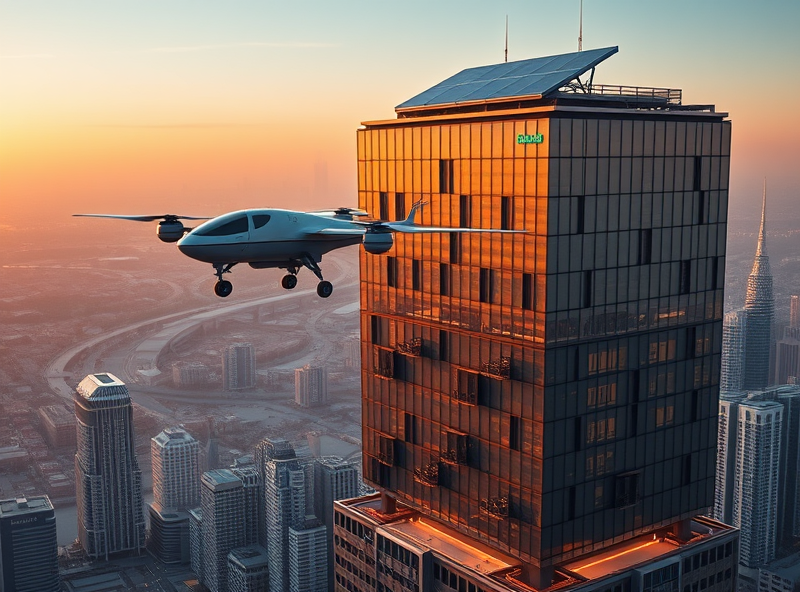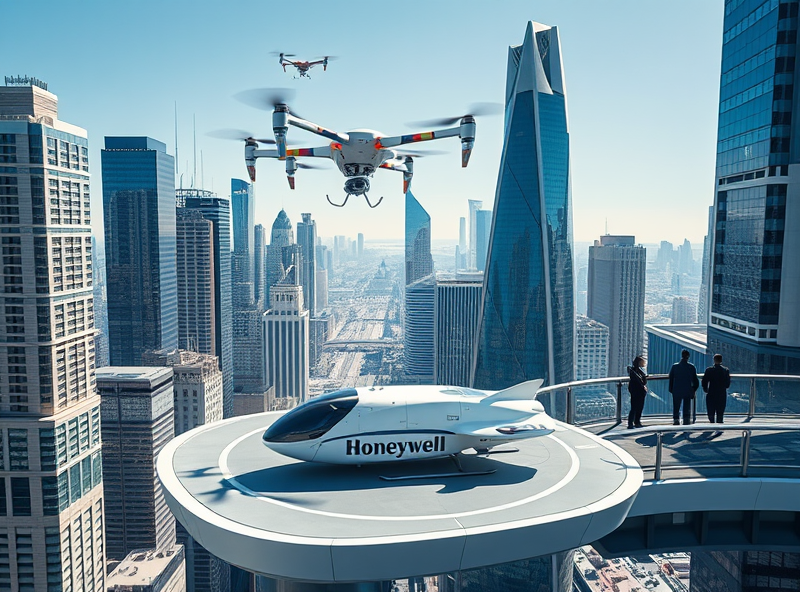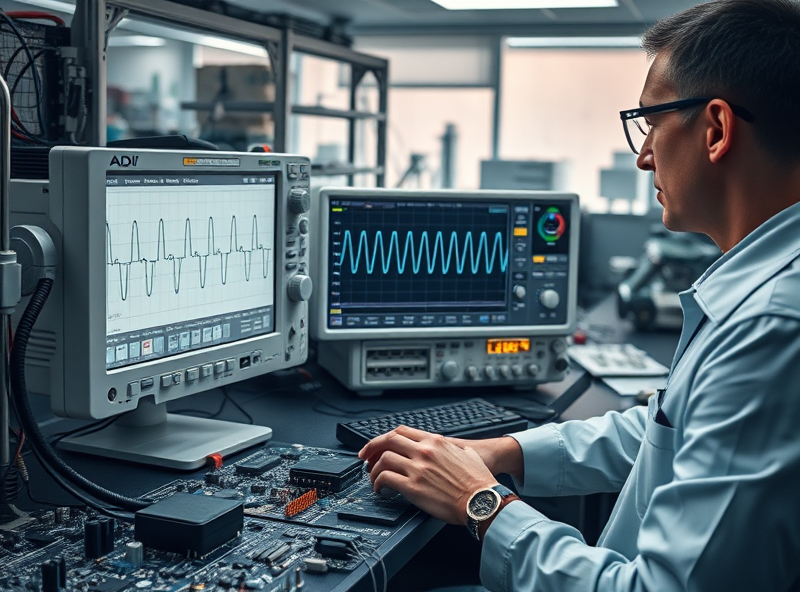
Honeywell’s High-Tech Comeback: Smart Buildings and Flying Cars
AI-Powered Building Control Systems

Smart buildings are no longer a futuristic concept—they’re here, and AI is at the heart of this transformation. Honeywell, a legacy name in industrial innovation, is leading a high-tech comeback by integrating AI into building control systems. These AI-powered systems optimize energy use, improve occupant comfort, and enhance building security in real time.
AI algorithms continuously analyze data from sensors placed throughout a building—temperature, humidity, occupancy, lighting, and even air quality. Based on this data, the system makes intelligent decisions, such as adjusting HVAC settings to reduce energy consumption without compromising comfort. This not only lowers utility bills but also contributes to sustainability goals by reducing carbon footprints.
Moreover, predictive maintenance powered by AI helps identify potential equipment failures before they happen, minimizing downtime and costly repairs. Facility managers can also receive real-time alerts and actionable insights, allowing them to make informed decisions quickly.
Honeywell’s AI-driven building management solutions are already being implemented in hospitals, airports, and office buildings, showcasing measurable improvements in operational efficiency and user satisfaction. As AI continues to evolve, we can expect even smarter, more adaptive environments that learn and respond to human behavior seamlessly.
For more on Honeywell’s smart building technologies, you can visit their official site: https://www.honeywell.com/us/en/industries/buildings
Energy Optimization and Carbon Management in Real Estate

As the real estate industry faces increasing pressure to reduce its environmental footprint, companies like Honeywell are stepping up with smart, tech-driven solutions. Energy optimization and carbon management are no longer optional—they’re essential for long-term sustainability, cost savings, and regulatory compliance.
Honeywell’s smart building technologies are revolutionizing how commercial properties operate. By integrating AI-powered energy management systems, buildings can now monitor, analyze, and optimize energy usage in real time. These systems automatically adjust lighting, HVAC, and other energy-consuming operations based on occupancy, weather conditions, and usage patterns. This not only reduces energy waste but also significantly lowers utility costs.
One of the most impactful innovations is Honeywell’s Forge platform, which provides building operators with actionable insights into energy performance and carbon emissions. With this data, facility managers can make informed decisions to retrofit old systems, shift to renewable energy sources, or implement predictive maintenance strategies. According to the U.S. Department of Energy, smart building technologies can reduce energy use by up to 30% (https://www.energy.gov/eere/buildings/articles/smart-buildings-smart-way-save-energy).
Carbon management is another critical area where Honeywell is making strides. Their solutions help track Scope 1, 2, and even Scope 3 emissions, enabling real estate companies to set and meet ambitious net-zero goals. With increasing investor and tenant demand for greener buildings, this level of transparency and control is a competitive advantage.
Incorporating these technologies doesn’t just benefit the planet—it also enhances tenant comfort, improves building value, and aligns with ESG (Environmental, Social, and Governance) objectives. For real estate professionals, embracing energy optimization and carbon management is a smart move toward a more sustainable and profitable future.
Advanced Air Mobility: Honeywell’s Role in the eVTOL Revolution

As the world moves toward cleaner, smarter, and more efficient transportation, Advanced Air Mobility (AAM) is taking center stage—and Honeywell is playing a key role in shaping this future. AAM refers to the use of electric vertical takeoff and landing (eVTOL) aircraft for urban and regional travel, aiming to reduce congestion, lower emissions, and dramatically cut travel time.
Honeywell, a company traditionally known for aerospace and industrial technologies, has pivoted into this emerging sector with remarkable agility. They are now providing critical avionics, flight control systems, and electric propulsion technologies tailored specifically for eVTOL aircraft. Their compact fly-by-wire systems, for example, offer the precision and redundancy needed for safe autonomous or semi-autonomous flight in densely populated areas.
One of Honeywell’s most notable contributions is its Urban Air Mobility (UAM) lab, where engineers test and refine technologies for real-world application. Their collaboration with leading eVTOL developers like Vertical Aerospace and Lilium highlights their commitment to innovation and safety in this fast-evolving field.
What does this mean for everyday life? Imagine commuting from downtown to the airport in under 10 minutes, without traffic or emissions. Honeywell’s technology is helping to make that vision a reality—sooner than you might think.
For a deeper dive into Honeywell’s AAM initiatives, you can visit their official page: https://aerospace.honeywell.com/us/en/learn/products/urban-air-mobility
Strategic Partnerships Driving Smart Tech Growth

Honeywell’s resurgence in the smart technology sector is being fueled by a series of strategic partnerships that are reshaping how we interact with buildings and urban mobility. These collaborations are not just about innovation—they’re about creating smarter, safer, and more sustainable environments for everyone.
One of the most notable partnerships is Honeywell’s alliance with Microsoft. By integrating Microsoft Azure’s cloud computing and AI capabilities with Honeywell’s building management systems, the companies are delivering real-time data analytics that help optimize energy use, improve air quality, and enhance occupant comfort. This is especially important in a post-pandemic world where indoor air quality and operational efficiency are top priorities for businesses and facility managers.
Another key collaboration is with Vertical Aerospace, a UK-based electric vertical takeoff and landing (eVTOL) aircraft manufacturer. Honeywell is providing advanced flight control systems and avionics for Vertical’s flying taxis, which are expected to revolutionize urban transportation. These systems are designed to ensure safety, precision, and seamless integration with future air traffic management networks.
These partnerships demonstrate Honeywell’s commitment to leveraging external expertise to accelerate innovation. By working with leaders in cloud computing, AI, and aerospace, Honeywell is not only modernizing its product offerings but also contributing to the broader smart city ecosystem.
For those interested in the technical depth of these collaborations, you can explore Microsoft’s official announcement here: https://blogs.microsoft.com/blog/2020/06/02/honeywell-and-microsoft-partner-to-redefine-the-building-of-the-future/
Strategic partnerships like these are more than business deals—they are blueprints for a smarter, more connected future. Whether it’s through intelligent building controls or next-gen air mobility, Honeywell is proving that collaboration is key to driving meaningful technological progress.







